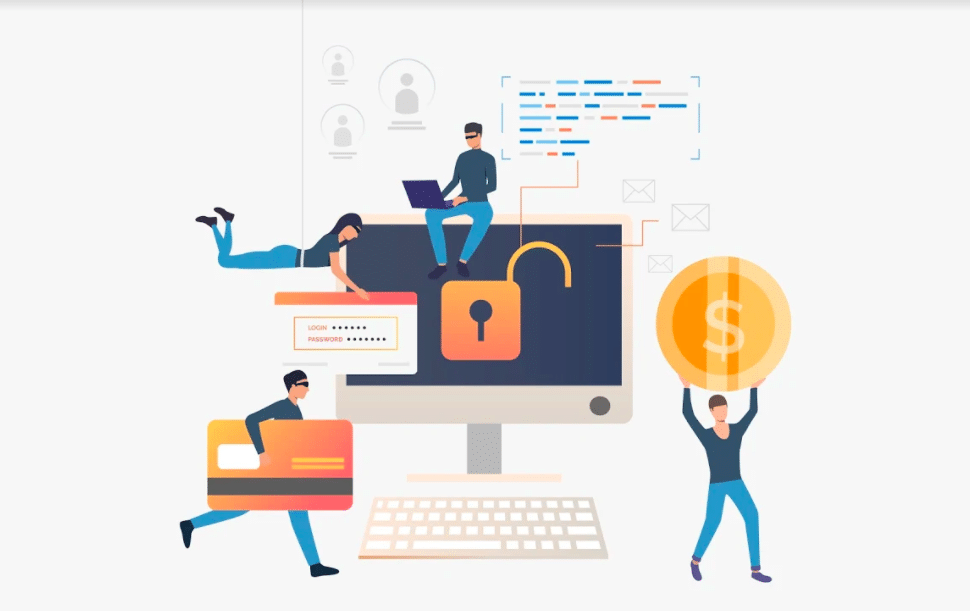
Is your data ready for 2021?
2020 showed all the ways that data protection could go wrong. Ransomware took off on a steady incline throughout the year with record numbers of data theft, corruption, etc. Data sprawl and cloud access to data have also become threats, as many employees moved to remote work and expanded companies’ potentially vulnerable data environments.
Organizations are paying more attention to security and data protection issues while utilizing cloud to better manage and protect their critical data.

The rise of low code in local government
During the pandemic, we’ve seen examples of local authorities moving from hypothesis to a live service, that’s been tested and iterated, within a matter of days. Low-code has made that possible; a type of software that allows non-technical people to create user interfaces like online forms without needing to do any traditional computer programming or coding.
Low-code platforms are able to produce neat digital services through configuration, rather than the normal route which demands service creators have good coding skills. This has allowed councils to deploy services at impressive speed. We all know that responding at pace is important in a crisis, and with many vulnerable people needing support right now, the rapid deployment of digital services has been vital.

Cloud forecast 2021: Planning, focus and agility remain keys to success
After an extraordinary year, businesses around the world are anxious to embrace 2021 as a year of renewed focus and a return to normalcy. But businesses must continue to focus on best practices and investments that will enable them to navigate the path ahead.
Much uncertainty remains in the coming year as the impacts of the global pandemic linger. Many of the workplace changes we adopted in 2020 will, by necessity, continue this year.

The costs of 2020: What have we learned about IT spending?
To say 2020 was a year of change is probably an understatement, and that’s no different for IT leaders. Pressure to optimize costs while simultaneously maintaining key operations to ensure survival (or even growth) has led to a lot of re-evaluation and, hopefully, reflection for the industry.
Technology now sits at the heart of almost every organization, but managing technology costs has become incredibly complex due to things like the flexibility of cloud, proliferation of the use of SaaS applications and increased investment in IT by business units outside of IT.

Intelligent storage with a brain: Why AI is a smart choice for midmarket customers
In an intensely competitive economic climate, midmarket customers are caught in an especially challenging position right now. Faced with many of the same problems we see large enterprise customers grappling with -- mushrooming data demands, unpredictable business growth etc. -- but with smaller budgets and fewer personnel to overcome them.
How can these customers compete against the big IT-spenders? Automation and analytics tools integrated with Artificial Intelligence (AI) and Machine Learning (ML) capabilities hold the answer -- helping to manage ever-growing storage demands more efficiently with fewer personnel, fewer resources and less human intervention.

Cybercrime peaked astronomically in 2020: Learnings and predictions for 2021
Nothing could have prepared us for 2020 -- a year that demanded a swift and dramatic restructure of corporate operations in response to the Covid-19 pandemic.
Remote workforces were created overnight, even within industries who never had the experience of managing effective, remote working teams. With limited time and resources to prepare and support home working employees, a makeshift remote setup was thrust upon us. This, consequently, created an opportunity for massive cyber security breaches and a stream of cyber attacks, which can have a devastating impact on businesses when the cost of a data breach averaged between $184k and $715k for a medium-sized business in 2019. 2020 was an opportunistic year for cyber criminals, who took advantage of a time of uncertainty. In the UK, businesses experienced a 31 percent increase in cyber crime during the height of the pandemic, with phishing emails up by nearly 700 percent, preying on what should be a company’s greatest cyber defense asset; their employees.

The post-pandemic impact for Service Provider Networks in 2021
The year 2020 was challenging to say the least. Between the pandemic, shutdowns, wildfires and other natural disasters, most of us will look forward to a new beginning in 2021. However, the pandemic response in 2020 will have a lasting impact on how and where consumers and businesses will use networks services, how service providers will build out their networks, and where they will invest in additional capacity.
On that basis, here are a few predictions for 2021 for service providers:

Securing modern apps in the era of API sprawl
As organizations continue to digitally transform business processes, they are increasingly transitioning from legacy applications to modern, cloud-native apps. These intricate modern apps feature far more APIs than their predecessors: In the past, an average app would usually include 1-2 APIs, but now they typically feature dozens. To make things more difficult, many of these new APIs are deeply embedded and hidden. Securing these APIs (and the larger app environments where they live) is proving extremely difficult.
Several other trends are also exacerbating the problem. For one, these new cloud-native apps are mostly built on microservices architectures. With microservices, apps are chopped up into smaller, disparate components. These components or services are then distributed across various clusters and locations, including potentially multiple public clouds and the edge. In addition, most organizations today employ a continuous software development cycle (including CI/CD) in which engineers are constantly churning out new versions of apps. Each new release comes with new APIs. For example, when a developer fixes a bug in an app, they deploy a new API.

3 ways individual workplace safety is improved through technology
In what the history books are sure to label The Pandemic Years: A Tale of Lockdowns and Coronavirus, it’s safe to say individual workplace care has taken on a brand new meaning.
Amongst face masks and other PPE, employee safety is emerging as a more pressing concern than ever before -- and with these fresh demands, technology rises to the challenge, providing innovative solutions and a sense of security in an otherwise uncertain environment.

How councils can be truly digital-first by transforming IT support
The appetite for councils to become digitally-led and transformative in their IT is growing, and this growth picked up a lot of speed last year due to the challenges presented by Covid. A sudden shift to working from home, combined with an urgent need for councils to continue the same level of service provision remotely, has increased the pressure on IT support teams within those councils.
This general mood is reflected in statistics, too. Research conducted by YouGov on behalf of Cantium has found that 70 percent of IT professionals in the public sector reported an increase in IT support tickets and requests since the tectonic shift in working life arrived in March of 2020.

From idea to product: A roadmap for the journey
How do you take an idea and turn it into a successful product? It’s easier said than done. Having a great idea is just one small step. The "productizing" of that idea requires many more steps to execute. According to the laws of market failure, most new products will fail even if they are competently executed. Good ideas typically fail because they can’t cross the barrier between innovation and production.
Bringing an idea to fruition and then getting it to market is a significant undertaking with many challenges and potential pitfalls along the way. And that’s to say nothing of the competition you will encounter, but there are some basic steps to take that will help position you for success.

My top 5 language AI books
Language AI is one of the most challenging areas of artificial intelligence, one where mainstream AI is far from coming near human-level performance, because it needs world knowledge to be solved (AI complete).
The shortcomings of modern machine learning approaches can be explained by the low efficiency of artificial neural networks. Because natural evolution is mainly driven by efficiency, I developed a strong interest for biologically inspired natural language understanding, hence the following book recommendations.

Compliance in your marketing? It's more necessary than you think
Recently, a report conducted by PFL and Demand Metric -- which surveyed nearly 600 marketing professionals across a variety of different industries -- revealed data accuracy, understanding audience needs, and branding as the three most important factors to multichannel marketing campaign success.
Data is critical for marketers conducting multichannel marketing campaigns because it’s used to personalized messages and reaching prospects at the right moment in their customer journey. When marketers rely on and analyze data within multichannel marketing initiatives and campaigns, they can measure and improve strategies in real-time, allowing for better, more segmented outreach. Without data to inform campaigns, marketers might as well write a message on a paper airplane and throw it out the window.

A CEO's view of 2021
For most of us, 2020 was a year like no other, defined by the most disruptive and defining event of the past 100 years. As surreal as it felt to have our regular lives screech to a halt, the pandemic served to wake us up in many ways, too. It pushed us to dig deep, take stock, and come together as human beings, citizens, partners, and colleagues.
We learned the power of forging alliances to overcome adversity versus pointing fingers and creating more problems. That only by stepping up and coming together as individuals, companies, and nations do we all benefit, survive, and win.

Preventive maintenance: Fine-tuning your warning system
Imagine that you’re driving your car. Everything is running normally when, out of the blue, your check engine light blinks on and off from your dashboard. At this point, the best course of action would be to stop driving and call a tow service, as a flashing check engine light signals that you have a serious problem that, if ignored, could cause serious damage.
And, despite the momentary inconvenience, you’ll likely be thinking: Good thing I had that signal. Now imagine the same scenario but without the warning light. In time, your easy fix can quickly escalate to a smoking engine and a hefty auto repair bill. Such is the case when businesses fail to implement the technology, personnel, and processes to support preventive maintenance.

